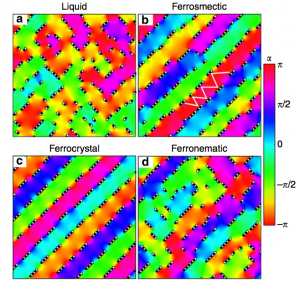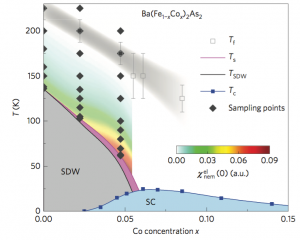The soft side of hard matter
Soft condensed matter is characterized by gigantic responses to external perturbations which is the reason why these systems are extremely useful for applications, like liquid crystals in our cell phones displays. In contrast, hard condensed matter a.k.a. solids respond more weakly to external perturbations but present an enormous richness of interesting phases like metallic, insulating, magnetic, superconducting, ferroelectric, charge order, etc. Currently, there is much interest in systems where these phases compete or coexist. It has been known for some time that this phase intermixing can breed new phases like high-temperature superconductivity. More recent is the discovery that this mixing can also bring typical soft-condensed matter phases to the realm of hard matter. A recent example, studied by CNR-ISC researchers and ISC fellows at Sapienza University, is that of cuprate high-temperature superconductors in the low-doping regime, where an insulating antiferromagnetic phase competes with the superconductor.
In these systems, it has been proposed a ferronematic phase [1]. In this state, electrons form polymers of charge accompanied by a non-trivial topological structure of the surrounding “solvent” played by antiferromagnetic regions. These electronic polymers can order in orientation (and direction) as the traditional liquid crystal phases (Figure 1). Interestingly, phenomena of this kind seem common and widespread in diverse materials. Another example (among many others) is given by iron-based high-temperature superconductors. Recent Raman scattering experiments show that spin fluctuations induce nematic fluctuations where, again, the electronic charge breaks the rotational symmetry and acquires orientational order [2] (Figure 2).
A new road is open in hard condensed matter where the emerging soft electronic matter can be shaped and manipulated for application purposes.
[1] M. Capati, S. Caprara, C. Di Castro, M. Grilli, G. Seibold, and J. Lorenzana Nature Communications 6,7691 (2015).
[2] F. Kretzschmar, T. Boehm, U. Karahasnovic, B. Muschler, A. Baum, D. Jost, J. Schmalian, S. Caprara, M. Grilli, C. Di Castro, JG Analytis, J.-H. Chu, IR Fisher, and R. Hackl, Nature Physics, published online, (2016).




